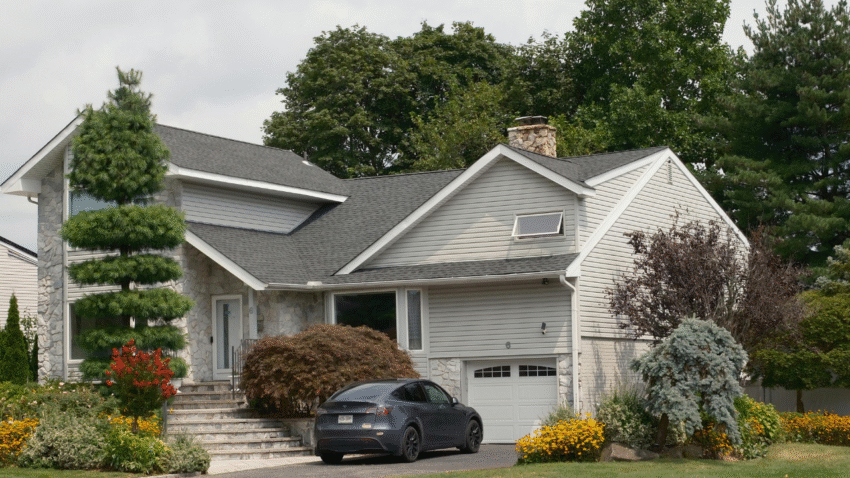Introduction
A garage floor takes a lot of abuse—from vehicle traffic and oil spills to dropped tools and seasonal grime. Over time, even a previously painted floor can start looking worn and stained. Learning how to repaint a garage floor for a fresh look will restore its appearance, protect the concrete, and make your entire garage feel cleaner and more inviting. With the right prep and products, you can achieve a professional-looking finish that lasts for years.
Why Repainting Your Garage Floor Matters
A newly painted garage floor isn’t just about looks—it offers several functional benefits:
- Protects Concrete – A quality coating seals the surface against moisture, chemicals, and stains.
- Improves Safety – Non-slip additives reduce the risk of falls.
- Boosts Resale Value – A clean, well-finished garage is a selling point for potential buyers.
- Easier to Clean – Painted floors resist dust and are simple to sweep or mop.
Whether you choose epoxy, polyurea, or standard concrete floor paint, proper preparation is the key to a long-lasting result.
Step-by-Step Guide to Repainting a Garage Floor
1. Choose the Right Floor Coating
Popular options for garage floor repainting include:
- Epoxy Coatings – Durable, chemical-resistant, and available in decorative finishes.
- Polyurea Coatings – Fast-curing and UV-resistant, but often pricier.
- Concrete Floor Paint – Budget-friendly, easier to apply, but less durable than epoxy.
Tip: If your garage gets a lot of vehicle traffic or heavy tool use, epoxy or polyurea will hold up longer than basic concrete paint.
2. Clear and Clean the Garage
Remove all vehicles, storage items, and tools from the garage. Sweep and vacuum to remove dust, dirt, and debris. The cleaner the surface, the better the paint will adhere.
3. Inspect for Damage
Look for cracks, chips, or pitting in the concrete. Repair them before painting:
- Use a concrete patching compound for small cracks.
- For larger damage, use a repair mortar and allow it to cure fully.
4. Strip Old Paint (If Needed)
If your previous coating is peeling or flaking, it must be removed.
- Use a floor scraper or a concrete grinder to strip loose paint.
- For stubborn areas, apply a chemical paint stripper designed for concrete.
- Rinse thoroughly and let dry.
5. Degrease the Surface
Oil and grease stains will prevent paint from bonding.
- Apply a concrete degreaser to stained areas.
- Scrub with a stiff-bristle brush.
- Rinse thoroughly with water and allow the floor to dry completely.
6. Etch the Concrete (If Required)
Some floor paints and coatings require etching to open the pores of the concrete for better adhesion.
- Mix a concrete etching solution according to the manufacturer’s directions.
- Apply evenly across the floor with a sprayer or watering can.
- Scrub with a broom and rinse thoroughly.
- Allow the surface to dry for at least 24 hours.
7. Apply Primer (If Recommended)
Some coatings adhere better with a primer, especially if repainting over bare concrete.
- Use a roller to apply a thin, even layer of primer.
- Let it dry according to the manufacturer’s instructions before painting.
8. Mix and Apply the First Coat
For Epoxy:
- Mix the resin and hardener thoroughly.
- Pour a small amount onto the floor and spread with a roller in manageable sections.
For Floor Paint:
- Stir well and apply with a roller, working in small sections.
Application Tips:
- Start at the far corner and work toward the garage door.
- Use a brush for edges and tight areas.
9. Apply the Second Coat
Once the first coat is dry (typically 12–24 hours for paint, or per epoxy instructions), apply a second coat for durability and even coverage.
Optional: Add decorative flakes while the second coat is still wet for texture and style.
10. Apply a Clear Topcoat (For Extra Protection)
For maximum durability, especially with epoxy or polyurea systems, apply a clear sealer over the painted surface. This adds UV protection, scratch resistance, and a glossy finish.
11. Allow Proper Curing Time
Avoid walking on the floor for at least 24 hours, and keep vehicles off the surface for 3–7 days, depending on the coating type.
Common Mistakes to Avoid
- Skipping Surface Prep
- Problem: Paint peels or chips quickly.
- Solution: Thoroughly clean, degrease, and etch before painting.
- Applying Paint to a Damp Floor
- Problem: Moisture prevents proper adhesion.
- Solution: Ensure the floor is completely dry before painting.
- Using the Wrong Type of Paint
- Problem: Standard wall paint will not hold up to garage conditions.
- Solution: Use coatings designed for concrete floors.
- Not Following Curing Times
- Problem: Paint gets damaged before it fully hardens.
- Solution: Follow manufacturer recommendations for dry and cure times.
- Skipping the Topcoat
- Problem: The floor wears down faster.
- Solution: Use a clear protective layer for long-lasting results.
Extra Garage Tips & Hacks
- Add Non-Slip Additives – Mix into the paint or topcoat for better traction in wet conditions.
- Maintain Regularly – Sweep often and mop with a mild cleaner to preserve the finish.
- Use Floor Mats in High-Traffic Areas – Protects paint from tire wear and heavy tool drops.
For more flooring ideas, check out our guide on how to replace damaged garage floor tiles, which pairs well with repainting for a full garage makeover.
Conclusion
Repainting your garage floor is a rewarding project that enhances both appearance and functionality. With careful preparation, the right materials, and proper application techniques, you can achieve a durable, professional-looking finish that will last for years.
Pro Tip: Plan your repainting during mild weather—extreme heat, cold, or humidity can affect drying times and adhesion. Bookmark this guide so you can reference it every time your garage floor needs a refresh.
